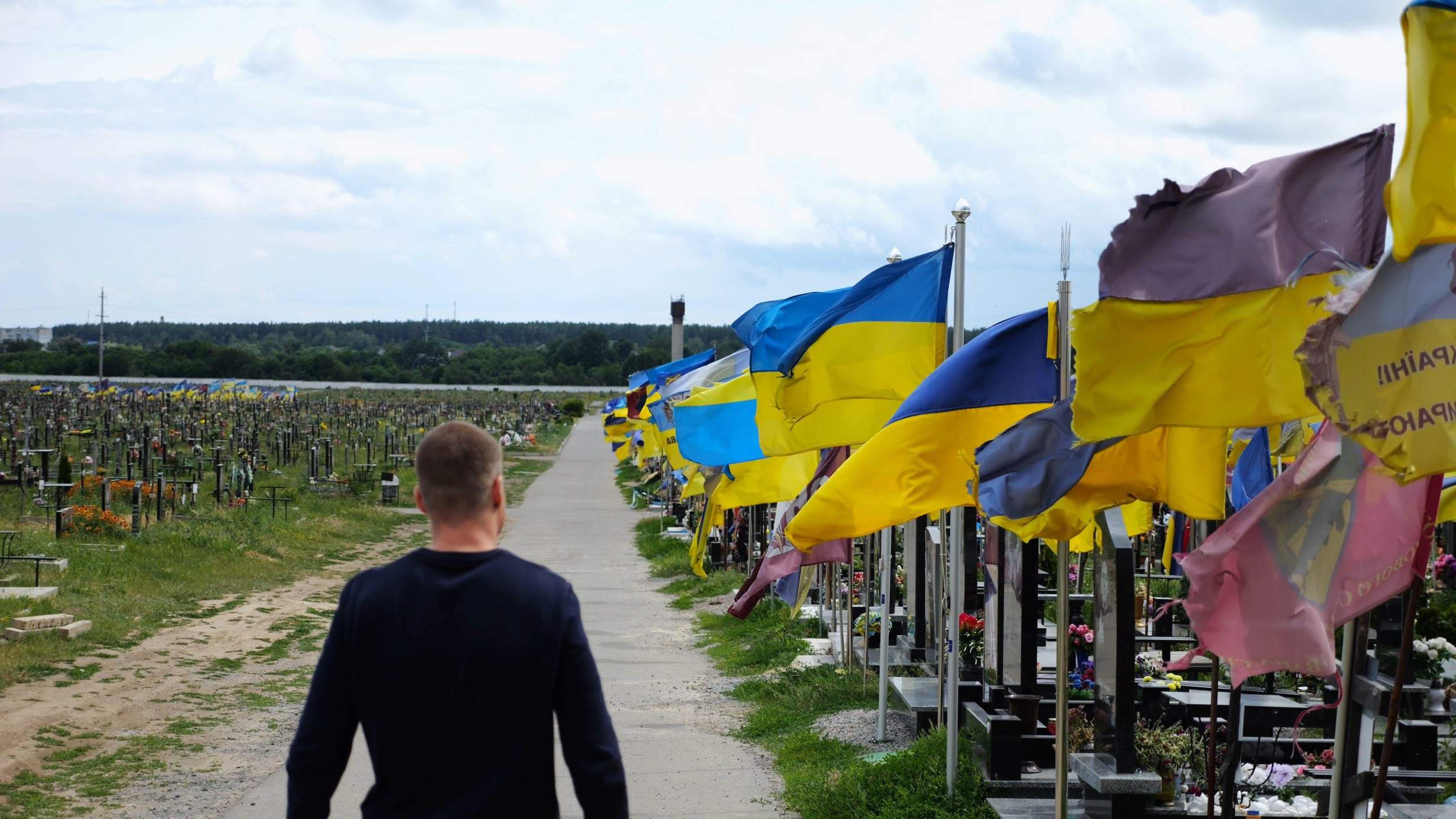
Read our Digital & Print Editions
And support our mission to provide fearless stories about and outside the media system
Europe is watching a perfect storm unfold on its doorstep. Ukraine’s fertile black earth, enriched by centuries of manure, is teeming with microbes. To add to this, drones hover above the trenches, preventing swift evacuation of the wounded. This causes wounded soldiers to lie longer in dirt, suffering multiple infections that antibiotics can no longer banish. The result amongst Ukrainian troops is more than troublesome: a surge in amputations, sepsis and deaths.
What is emerging is being described as nothing less than trench warfare in a post-antibiotic era, where hygiene practices are forced back to those of Florence Nightingale in the Crimean War.
This was the warning sounded in London this week at the Lessons From the Frontline conference, held at the Sir Michael Uren Hub, Imperial College’s White City campus. Doctors, historians and policymakers spoke of Ukraine as the world’s first “post-antibiotic war”.
Scientific data is offering up little in the way of comfort. Ukraine was already battling high antimicrobial resistance (AMR) before 2022. The full scale invasion multiplied the scourge.
And now, with soldiers falling wounded on soil alive with bacteria, their injuries pressed into fields fertilised for centuries, the subsequent infections are proving impossible to treat.
“Ukraine is farmland that has had manure dug into it for hundreds of years,” says Emily Mayhew, a medical historian at Imperial College.
It is highly bacterially active, and people fall onto the ground, much as they did on the Western Front. Infected wounds now resemble those of a pre-antibiotic era. I look at Ukraine and I see a post-antibiotic war
Emily Mayhew, medical historian at Imperial College.
Hygiene has also, in parts, collapsed as Ukraine’s medical infrastructure has buckled. Hospitals are overcrowded, nurses overstretched, sterilisation crippled by bombardment and power cuts. Transfers of patients scatter microbes across the country.
“The war has amplified this exponentially,” says Hailie Uren, an Australian-born consultant for the Ukrainian Ministry of Health. “By the time they reach western Ukraine, many carry six completely resistant bacteria. Around 30% cannot be treated with antibiotics at all.”
The pathogens are formidable. Klebsiella pneumoniae, responsible for one in five AMR deaths worldwide, has in Ukraine mutated into strains impervious to every drug.

Eight in ten wounded soldiers now carry the NDM-1 resistance gene, ten times Europe’s average. Acinetobacter baumannii, once nicknamed “Iraqibacter,” has resurfaced, unbowed even by carbapenems, the last line of defence. Together with Pseudomonas aeruginosa, these form the dreaded “extensively drug-resistant” category.
For patients, the consequences are long-lasting.
Oleksander Bezverkhny, a soldier, lost both legs and endured five bouts of sepsis after treatment in three hospitals. His survival required 100 operations and rare imported drugs. Many others are not so fortunate: mortality rates for such infections can exceed 50%.
Singurgeons are increasingly turning to amputation as the only viable option, with as many as 100,000 amputations estimated amongst the war wounded.
As Dr Danylo Turkevych, a Ukrainian trauma surgeon who works at the Superhumans rehabilitation center in Lviv, Ukraine, says: “If you have a patient treated for six or twelve months and you still have continuous infectious complications, often the only solution is amputation. People get tired, the risk of sepsis grows, and sometimes it is simply easier for the patient to lose the limb and return to activity more quickly.
“We consider debridement as a primary antibiotic,” he says.
The full and complex challenges faced by veterans recuperating from the trauma of a high explosive blast – a recovery hitherto partially sped up by antibiotics – are now being exposed.
“We are going back to what we were doing in 1914,” says Dr Shehan Hettiaratchy OBE, a London-based reconstructive surgeon with a specialism in conflict medicine. “Some of the practices that our forebears from Western Front will be very familiar with; rapid evacuation, surgical department early as possible, washing wounds, decontamination, and using the knife to control infection in a way that they would be familiar with.”
History’s echoes are hard to ignore. In Ukraine’s Crimea, decades before the Great War, Florence Nightingale championed hygiene, fresh air and clean wards as the best defence against infection. Those same lessons are being relearned today, but the difference is that the bacteria now defy every drug in the medical arsenal.
Bacteria on the Move
What should worry the West is that the threat is not confined to Ukraine. Resistant strains have already reportedly travelled to hospitals in Germany, the Netherlands, Norway and Japan. Some facilities have had to shut entire departments for sterilisation after treating evacuated patients.
“This is going to be something that affects the biosecurity of the whole of Europe,” Uren warns. “The most highly resistant strains in Ukraine are in Lviv, and Lviv is 70 kilometers from the border of Poland. Bacteria don’t know about borders, and it is spreading.”
International agencies are scrambling to control the spread. The American Centres for Disease Control, the WHO and European partners have rushed lab equipment and training to Ukraine. While Uren is pushing for an operation to scrub patients with antiseptics and test swabs earlier in the evacuation chain, treating them as if they were victims of biological warfare.
ENJOYING THIS ARTICLE? HELP US TO PRODUCE MORE
Receive the monthly Byline Times newspaper and help to support fearless, independent journalism that breaks stories, shapes the agenda and holds power to account.
We’re not funded by a billionaire oligarch or an offshore hedge-fund. We rely on our readers to fund our journalism. If you like what we do, please subscribe.
Yet this pushback is set against a medical system that remains dangerously frail. More than 1,800 health facilities have been damaged or destroyed since the war began. Infection control was weak even before 2022; today, it needs huge investment to keep up, but to add to the challenge, finding willing donors to address the issue is proving hard.
“When a donor gives money to a proposal, for example, they want a surgeon with a scalpel that they can put in their newsletters or their website,” Uren says. “They want to see a prosthetic and a smiling patient. You can’t do that with an infected patient. You can’t do that with someone with…a wound that’s full of pus.”
This comes against an already worrying backdrop. Globally, the number of people suffering from AMR is staggering. It reportedly killed 1.14 million people in 2021 and was implicated in nearly 5 million more. By 2050, it could claim 10 million lives annually, eclipsing cancer.
It is difficult, within the sound of the guns, to say let’s pay attention to bacteria. But it is those little bugs who know how to adapt and to resist.
Emily Mayhew, medical historian at Imperial College
Some innovations exist: cement blocks laced with antibiotics placed inside wounds, or renewed focus on handwashing, as championed by Hungarian Ignaz Semmelweis in the 19th century. But such measures are stopgaps.
Ukraine’s war is hastening a new front in global conflict: not tanks or missiles, but microbes evolving in the mud. And unless Europe grasps the scale of the threat, trench warfare in Ukraine may speed up a microbial threat that could dramatically impact healthcare systems far, far closer to home.
